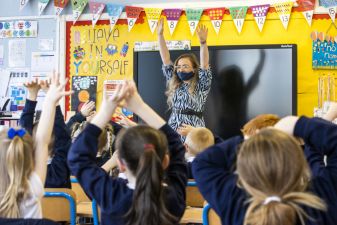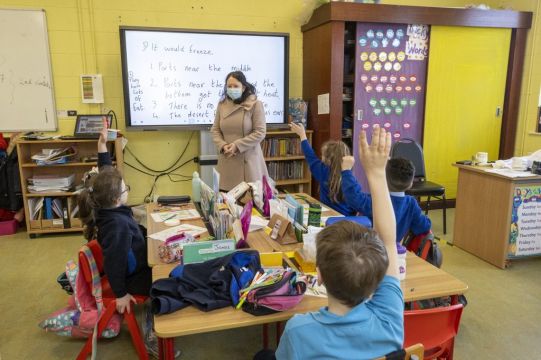The highest incidence rates of Covid-19 in children took place during school holidays, a HSE briefing has heard.
Prior to the summer break this year, there were on average 1,000 cases per week among zero to 18-year-olds, but this figure rose to between 3,500 and 4,000 a week when children were out of school.
HSE public health specialist, Dr Abbey Collins, said this was a reflection of stringent test and trace protocols and strict mitigation measures implemented across the board in school settings.
She said: “We saw the largest number of children get Covid over January…. over July and August, when the children haven’t been in school.
COVID-19 is still here and the Delta variant spreads very easily. You can still spread the virus, even if you don't have symptoms.
Distance. Wear. Wash.
We can do this. #ForUsAllhttps://t.co/Awj9Cxhkup pic.twitter.com/KyZruP48LhAdvertisement— HSE Ireland (@HSELive) September 9, 2021
“There is an element about stability of life and being in an environment where there is a quite sort of strict, in the nicest possible way, enforcement of the mitigation measures that we are asking our schools. That is having an impact.”
Dr Collins said that outside of schools, children often only get tested for the virus if a parent or family member has tested positive.
In schools, however, proactive testing and tracing is done where any positive case arises.
“We go into the school and we proactively test a large number of people,” she said.
She added: “I think it’s just interesting that there were 1000 cases per week on average throughout the school term.
“And just before we returned after the summer holidays there were 4000 cases a week in zero to 18-year-olds.
“So clearly you’re more likely to get Covid in the school holidays if you go by those numbers.
To everyone who has already received their COVID-19 vaccine, thank you.
Participating pharmacies and GPs now offer free COVID-19 vaccines. If you haven't registered for your vaccine yet, check with a participating pharmacy or GP. More: https://t.co/0ZeMn13eb0#ForUsAll pic.twitter.com/XSBai1xHiWAdvertisement— HSE Ireland (@HSELive) September 8, 2021
“I think that’s the importance of mitigation measures across the board, rather than just in one setting.”
The Health Information and Quality Authority (Hiqa) has completed a review on mask-wearing for children in primary schools, which is to be considered by Nphet at a meeting next week.
Dr Collins said there are “a lot of complications” associated with compulsory mask wearing for children.
She cited the fact that in the US, about 30 per cent of children wear glasses, which can cause problems for mask wearing.
She said: “Small ears and glasses and face coverings and steaming up and trying to see and eat and drink, ends up requiring assistance for those face coverings.
“And that means someone getting very close to assist someone putting on their face covering.
“Those are the kinds of things that get balanced in those discussions.”
The HSE’s chief clinical officer, Dr Colm Henry, said there is “a lot for us to be optimistic about now.”
He said while the incidence rate of Covid-19 remains high, it is dropping.
“The average numbers or cases per day, the five-day moving average, it’s 1400, 1500 per day. It’s beginning to fall now,” he said.
“Its dropped 14% compared to last week, about 20 per cent, compared to the figures two weeks ago.”

He added: “Equally significantly, some of those age groups that were causing concern to us, notably the 18 to 24 years group for example, we were quite worried about them, as they were principal drivers of infection, not just in their own group age group but elsewhere.
“We’re seeing a drop of 20 per cent in the incidence of disease among this age group.”







